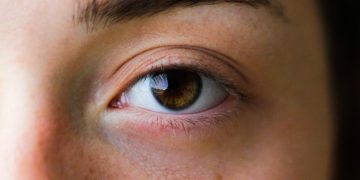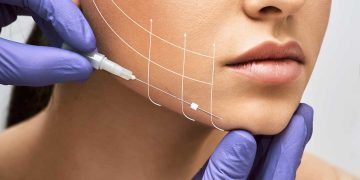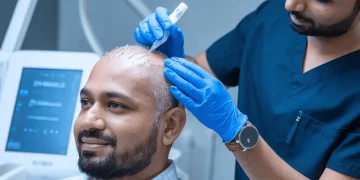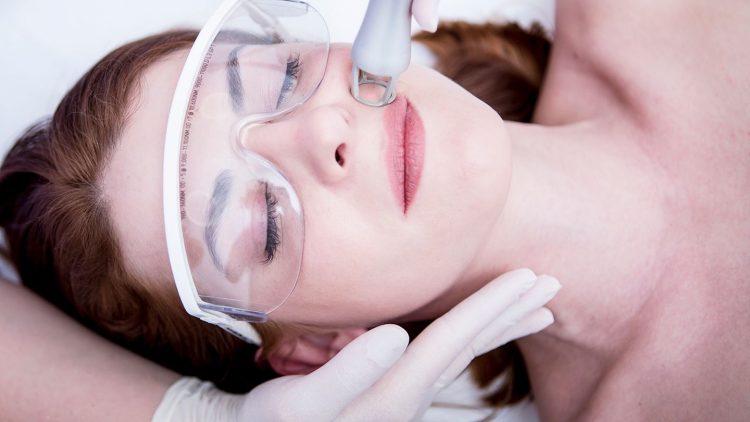When it comes to skin rejuvenation, few treatments rival the popularity of laser resurfacing and chemical peels. Both promise smoother texture, brighter tone, and younger-looking skin—but they take very different paths to get there. For those navigating the growing landscape of aesthetic treatments, understanding which method aligns with your skin type, lifestyle, budget, and goals is essential.
So, how do you decide between these two rejuvenation powerhouses? Let’s explore the science, recovery process, and long-term benefits of each to help you determine which approach best suits your skin and your schedule.
Understanding the Basics: How Each Treatment Works
Both laser treatments and chemical peels aim to remove damaged outer skin layers and stimulate new collagen production, but they do so using fundamentally different mechanisms.
Laser Resurfacing: Precision Through Light
Laser resurfacing uses focused light energy to vaporize or heat targeted areas of the skin. Depending on the laser type—ablative or non-ablative—it can either remove the outermost skin layers or work deeper to remodel collagen without visible peeling.
- Ablative lasers (like CO₂ or Er:YAG lasers) physically remove layers of the skin, effectively treating deep wrinkles, scars, and significant sun damage.
- Non-ablative lasers (such as Nd:YAG or Fraxel) penetrate the skin without breaking the surface, stimulating collagen while requiring less downtime.
Lasers are known for precision control, making them ideal for specific problem areas such as pigmentation, fine lines, and acne scarring.
Chemical Peels: Power Through Chemistry
Chemical peels, on the other hand, use acidic solutions—most commonly alpha hydroxy acids (AHAs), beta hydroxy acids (BHAs), or trichloroacetic acid (TCA)—to dissolve the top layers of skin. This controlled exfoliation encourages new cell turnover, revealing fresher, smoother skin beneath.
Peels are typically categorized by depth:
- Superficial peels: Use mild acids like glycolic or lactic acid for a light exfoliation.
- Medium peels: Often use TCA to penetrate into the upper dermis, improving texture and pigmentation.
- Deep peels: Utilize phenol-based formulas to address deep wrinkles and severe sun damage—though recovery time can stretch for weeks.
In essence, lasers rely on energy, while peels rely on chemistry—two distinct yet complementary routes to skin renewal.
Skin Type Considerations: Customizing the Choice
No two complexions are alike. What delivers glowing results for one skin type might trigger irritation or pigmentation in another. Selecting the right rejuvenation method requires an honest assessment of skin tone, sensitivity, and primary concerns.
For Lighter Skin Tones (Fitzpatrick I–III):
Individuals with fair to medium skin tones can safely undergo most laser treatments, including ablative resurfacing. The lower melanin content reduces the risk of post-inflammatory hyperpigmentation (PIH).
Chemical peels also work well, particularly glycolic acid or TCA-based peels for sun damage and texture issues. However, overly aggressive peels may increase redness or flaking for sensitive types.
For Darker Skin Tones (Fitzpatrick IV–VI):
People with higher melanin levels must be more cautious. Certain lasers—especially high-intensity ablative types—can trigger hyperpigmentation, hypopigmentation, or scarring.
Safer alternatives include:
- Non-ablative fractional lasers like Fraxel Restore or PicoSure, which minimize epidermal disruption.
- Mild chemical peels using lactic acid or salicylic acid that exfoliate gently without excessive inflammation.
Board-certified dermatologists often recommend gradual treatments over aggressive ones for darker skin tones to reduce risk and ensure even results.
For Sensitive or Acne-Prone Skin:
Sensitive skin may react poorly to chemical acids, especially TCA or phenol. In such cases, non-ablative lasers or LED-based therapies can offer safer rejuvenation.
For acne-prone skin, salicylic acid peels (a BHA) help unclog pores and control oil, while fractional lasers can reduce acne scars and redness with minimal downtime.
Downtime and Recovery: What to Expect
One of the most important distinctions between laser and chemical peels is recovery time—and this can be a decisive factor for many patients balancing work, travel, or social commitments.
Laser Resurfacing Recovery
- Ablative lasers: Expect 5–14 days of downtime depending on the intensity. Redness, oozing, and crusting are common before revealing new skin.
- Non-ablative lasers: Typically require 1–3 days of mild redness with minimal disruption.
Post-treatment care involves gentle cleansing, avoiding sun exposure, and regular use of healing ointments or occlusive moisturizers. The new skin remains pink for weeks but gradually settles into a smoother texture.
Chemical Peel Recovery
- Superficial peels: Minimal downtime—some redness or flaking for 1–3 days.
- Medium peels: Peeling and tightness for 5–7 days.
- Deep peels: May require 2–3 weeks of healing, with strict sun avoidance.
Post-peel care emphasizes hydration, avoiding exfoliation, and consistent broad-spectrum SPF protection. Over-peeling or early exfoliation can disrupt healing and cause scarring.
Verdict: If you can afford more downtime for dramatic results, ablative lasers deliver the most significant transformation. For subtle renewal or busy schedules, light peels or non-ablative lasers are more practical.
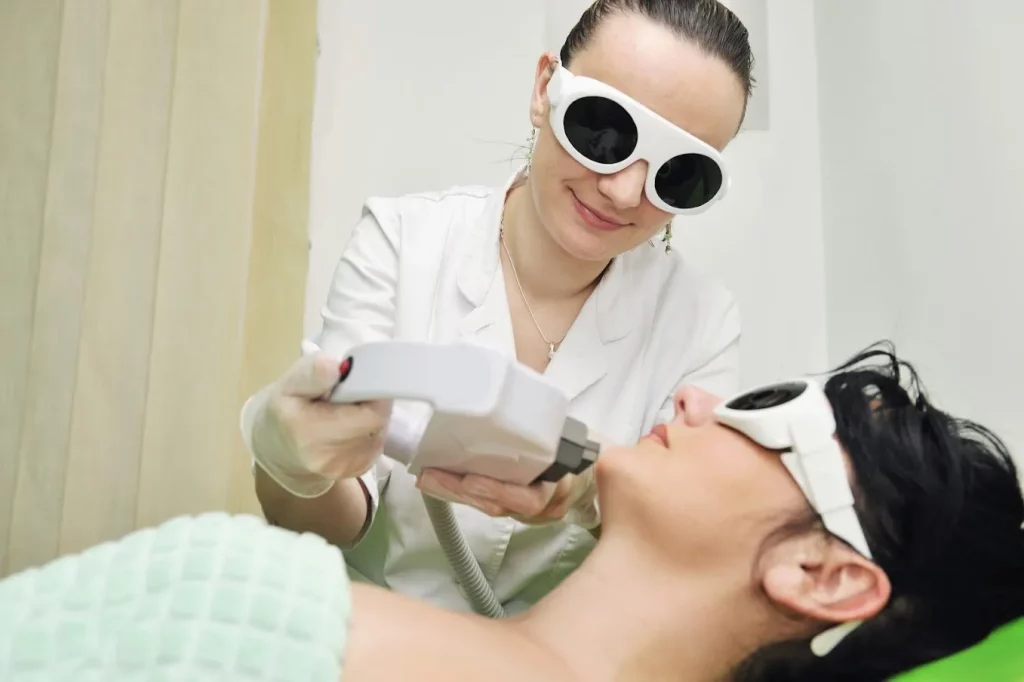
Cost-Effectiveness: What You Pay vs. What You Gain
Pricing for rejuvenation treatments varies based on depth, device type, and practitioner expertise—but understanding cost relative to longevity helps measure true value.
Laser Treatments
- Non-ablative lasers: $400–$1,200 per session
- Ablative lasers: $1,500–$3,500 per session
- Fractional CO₂: Up to $5,000 for full-face treatment
Most patients need 1–3 sessions, spaced months apart, with results lasting 1–3 years depending on lifestyle and skincare maintenance.
Chemical Peels
- Superficial peel: $100–$300 per session
- Medium peel: $400–$800 per session
- Deep peel: $1,000–$2,500 per session
While chemical peels are more affordable upfront, they often require maintenance every few months for sustained glow. Deep peels, however, can last years, much like an ablative laser.
Cost-to-Benefit Summary:
- Laser = higher initial investment, longer results
- Chemical peels = affordable entry, more frequent upkeep
The choice ultimately depends on whether you prefer long-term transformation or incremental improvement.
Results Comparison: Which Delivers More Radiance?
Texture and Wrinkles
Ablative laser resurfacing remains the gold standard for deep wrinkles and scarring, offering precision control down to the micrometer. Peels can smooth fine lines but often fall short for deeper furrows.
Pigmentation and Sun Damage
Both methods improve discoloration, though fractional lasers excel in breaking down deeper pigment clusters like melasma. Medium-depth peels, however, effectively even tone for mild-to-moderate hyperpigmentation.
Pore Size and Oil Regulation
Lasers, particularly non-ablative ones, can reduce enlarged pores by tightening the surrounding collagen. Salicylic acid peels are excellent for oily, acne-prone skin.
Overall Glow
Chemical peels offer a more instant “freshness” boost after a few days of peeling. Laser treatments deliver progressive radiance over weeks as collagen remodeling continues.
In terms of long-term rejuvenation, lasers outperform, but peels win in short-term skin luminosity and affordability.
Combination Approaches: Why Choose One When You Can Have Both?
Dermatologists increasingly recommend combination therapy, leveraging the strengths of both methods.
For example:
- Laser first, peel later: After laser resurfacing, light peels maintain the glow and prevent buildup of dead cells.
- Peel first, laser second: Prepping the skin with peels can enhance laser penetration for more uniform results.
These treatments should always be performed under professional supervision with appropriate spacing (typically 4–6 weeks apart) to avoid overexfoliation or pigment changes.
Expert Insights: Dermatologists Weigh In
“Think of lasers as sculpting tools and peels as polishers,” says Dr. Marina Lopez, a board-certified dermatologist in Los Angeles. “Lasers rebuild the structure; peels refine the surface.”
Dr. Koji Yamamoto from Tokyo adds, “For Asian skin types, controlled chemical peels are often safer than aggressive laser treatments, as they reduce pigment risk. Personalization is everything.”
Meanwhile, Dr. Elena Park from Seoul emphasizes a hybrid model: “The future of rejuvenation lies in synergy—combining energy-based devices with biochemical exfoliation for customized results.”
Final Verdict: Matching Method to Mindset
There’s no universal winner in the laser vs. peel debate—only what’s right for your unique skin journey.
- Choose LASER RESURFACING if:
You seek long-lasting transformation, collagen renewal, and are comfortable with longer downtime and higher cost. - Choose CHEMICAL PEELS if:
You prefer gradual improvement, minimal recovery, and a cost-effective way to maintain glow throughout the year.
For many, the ideal approach lies somewhere in between—alternating between peels and laser maintenance for balanced rejuvenation.
In the end, the best method isn’t necessarily the strongest one, but the one most aligned with your skin type, lifestyle, and vision of beauty.





















